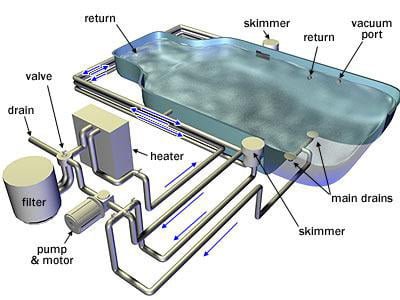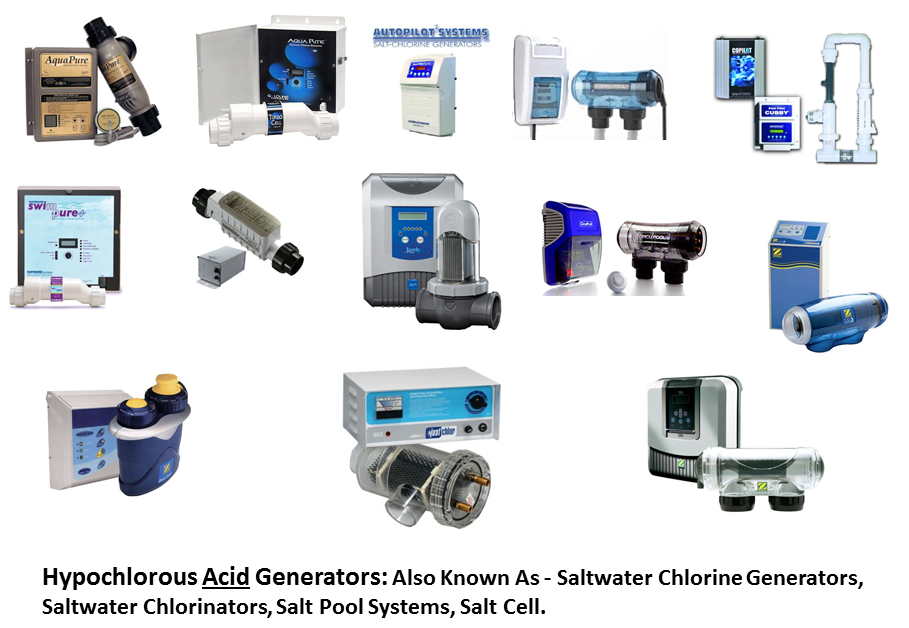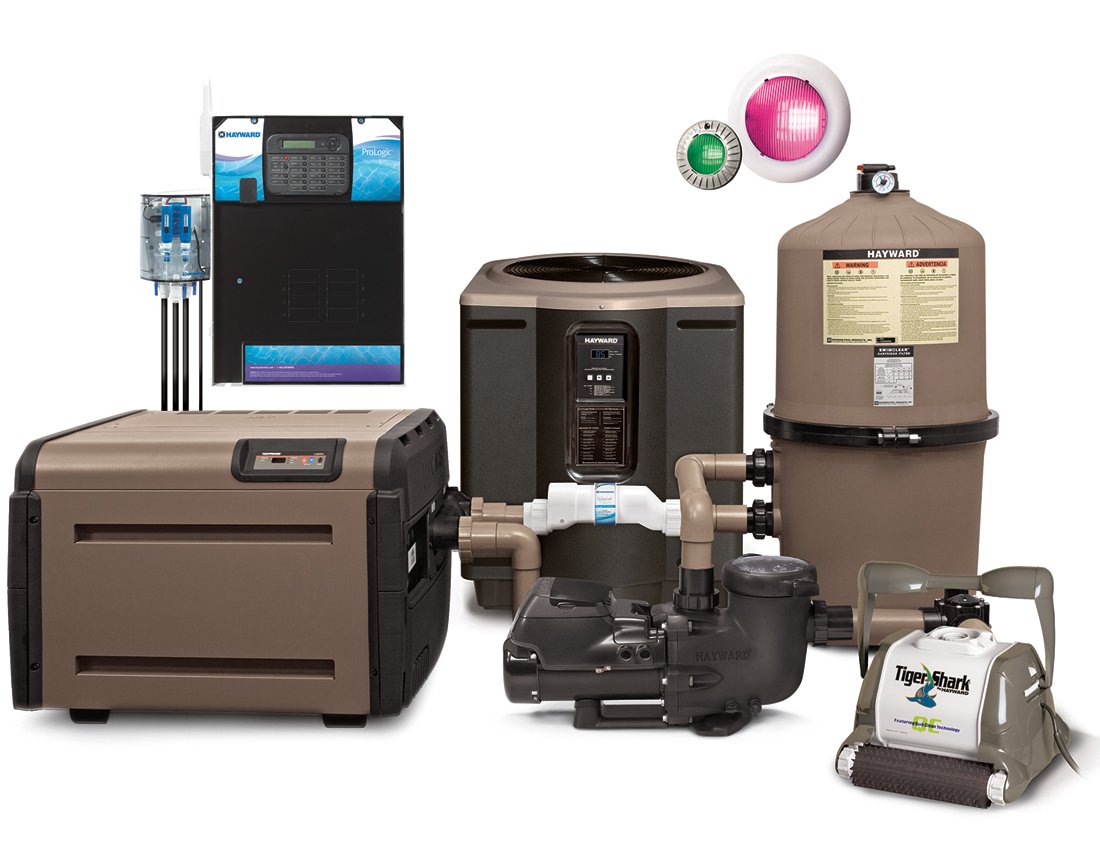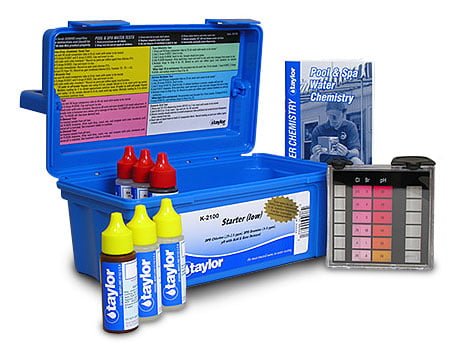Proper winterizing is a key aspect of pool maintenance. The dropping temperatures and harsh weather conditions can wreck havoc on a pool that is not properly prepared. In particular, water that freezes can inflict significant structural and cosmetic damage to a pool that has not been winterized correctly. Before closing your pool for the season, familiarize yourself with the problems that can occur so you know how to prevent them.
Cracked Tile
In a tile-lined pool, frozen water can do a great deal of damage. While many types of pool tile are treated to resist chipping from ice damage, surface water that freezes may expand enough to crack the entire tile. As a result, a tile-lined pool should be drained slightly when preparing it for the winter so the water line falls beneath the tile design. If the water line is lowered, the tile is protected should freezing occur.
Broken Skimmers and Filter
The skimmers and filter that are used to keep your pool clean during the summer season are typically made of plastic. If they are left in the pool during the winter and the water freezes, the expansion inside the skimmers and filter can push against their walls and cause them to crack. If your skimmers and filter are removable, take them out of the pool before covering it for the winter. For items that cannot be removed, lower the waterline beneath them so they are protected should the pool water freeze. You may also purchase a skimmer plug, which is expandable and helps prevent the skimmer from cracking.
Torn Vinyl Liner
Vinyl lined pools require special protection from frozen water. If a vinyl liner has a leak, the pool may lose several inches of water over the course of a winter. As the pool loses water, any ice that forms on the surface of the water may begin to fall. If the sheet of ice is thick enough, it can tear the liner. Prior to closing your vinyl-lined pool, inspect for possible leaks. If you suspect a leak, patch it. In the event that you cannot patch the liner before the winter, remember to periodically add water to the pool over the course of the winter to prevent ice sheets from falling.
Burst Pipes
The most serious damage that can occur to a pool due to frozen water is a burst pipe. If water is left inside the pipes during the winter, it can freeze and expand so it pushes against the interior of the pipes and causes them to burst. When winterizing your pool, drain the pipes. Use a compressor or high power vacuum connected to the return lines at the filter to blow out the entire system. You can also add anti-freeze to the pipes to prevent freezing and bursting.
While it will certainly be cheaper, it will not be easy. We have noticed over the years a pattern for new pool owners. Initially, having minimal knowledge of the pool filter system, water chemistry, or the processes involved with maintaining a clean, safe pool, many will outsource the service to a company such as ours. However, one of two things seem to eventually happen — the pool company does a great job and makes it looks easy, or the pool company does a poor job and the owners realize they could do better themselves. At that point they decide to give it a try themselves. Sometimes it works wonderfully; sometimes it does not go as planned. Even if it goes well, after awhile the owners eventually seem to come to the conclusion that they either have better things to do with their time, or that they do not have the time or motivation to keep after their pool as necessary, (evidenced by a green or dirty pool more often than not). While pool cleaning is not difficult, it is time consuming to perform the required tasks, and maintain all the appropriate chemicals on site, and to spend weekend or evening time cleaning as opposed to swimming or relaxing. Our service technicians today are well-trained, certified professionals who are experts in water chemistry, hydraulics, filtration, plumbing, electricity and sanitization. An improperly maintained pool is not only an eyesore, it can also very easily be unhealthy, and a burdensome annoyance as yet another job that needs to be done! We are here to simply allow pool owners to enjoy their pools, rather than work on them.
Weekly maintenance and cleaning is required to keep your pool safe and clean. Whether or not you need the full range of services DMV Pool Service provides, it yet really depends on how much time and effort you are willing to spend on your swimming pool yourself. If your only interest is to be able to jump in at any given time, then you probably want to consider getting the full service package.
Most clients open their pools during the first two weeks of May, in order to be ready for Memorial Day Weekend. Some open in early March, because they like to look at their pool and it puts them in a summer frame of mind!
Yes. Your pump should turn over the water through your filter in your pool at least once per day.
When opening in the spring, the turn-around time from Winterized to swim-ready pool can vary. A number of factors effect the time, including: surrounding greenery , condition of the pool at closing, the fit and type of cover, time of year (the later in the spring that a pool is opened the greater change of an algae bloom from rising water temperatures) and the quality and type of filtration system. As a general rule of thumb a DE filter can clear up a pool within 1-3 days, a sand filter 5-10 days, and a cartridge system can vary widely based on the size and condition of the filter elements, and how often they are disassembled and cleaned. Cartridge filters are not an appropriate filter media for the Mid-Atlantic area and areas north of here, as they need to be manually cleaned multiple times during the start-up process. Further south, where pools are in operation year round a cartridge filter can be a sound choice.Once the pool water is clear, debris removal will generally take 1-2 visits to have the pool looking clear, blue and free of debris. It is best to open your pool at least 10 days before you actually plan on using it, especially if you have a sand or cartridge filter.
Yes. If your basket are overflowing the leaves will impair the water circulation and your pump will run dry.
1) Blocked suction line ( check skimmers, main drain and pump basket )
2) The motor bearings are failing and motor needs to be rebuild or replaced
It depends on the type of service you sign up for. We offer both weekly and bi-weekly visits. Deciding which is best for you depends on a number of factors, such as the proximity and type of vegetation, the size of the pool, and the age of the equipment (modern equipment often requires less attention). The amount of time an owner intends to invest in the pool also plays a significant role in deciding whether bi-weekly service would be appropriate over weekly service. During the non-visit weeks the pool will typically need to be balanced with appropriate chemicals, skimmer baskets emptied, filter back-washed, bottom vacuumed, etc.
Brushing your pool will keep dirt from occupying the small pores and starting small organic farms. Steel bristled brushes, called algae brushes, are very effective. Remember to never use a steel brush on a vinyl lined pool. Done regularly, brushing can also reduce the time spent vacuuming. Brush from the shallow end towards the deep end in overlapping strokes. Circle the pool towards the main drain, and much of the dirt will be swept up into the filter in this manner.
In fresh-water applications (such as pools, spas, water-features, etc.) salt is added to the water to produce a salinity of approx 3000 ppm (parts-per-million), which is 1/12th as salty as ocean water, or 1/3rd as salty as human tears. Pool-side plants and water-feature vegetation, in almost all cases, are unaffected by the low salinity water.
What consumers call a salt pool is actually a pool with a chlorine generator. Salt is mixed into the water, and through an electro-chemical reaction with the salt the generator creates the purest form of chlorine available – the chlorine gas. Salt generating pools are a more environmentally friendly option as they do not require the manufacturing of solid chlorine tablets. The cost of a chlorine generator is comparable to the cost of a 5 year chlorine supply however a salt pool will be easier to maintain over that time period for a typical homeowner.
Salt is added to the water at the time of installation. After that, only top-up salt is required to make up for salt lost through water splash-out, overflow due to rain, filter back-flushing, leaks in the pool etc. Evaporation does not reduce the salt level nor is the salt consumed in the saltwater system process.
No, the salinity is not sufficiently high to cause corrosion. The water salinity is similar to that of eye-wash solution (very mild).
Ozonators do sanitize water, but the process alone is insufficient to oxidize solids within the water. In most cases, the simple act of climbing into the water releases enough contaminants to overwhelm the ozonator’s efforts for hours. This leaves the pool unsanitized while in use. Maintain a chemical residual, however, and the spa stays clean even after guests drop in. Ozonators can reduce the need for chemicals in spas — and even in pools — but they cannot replace them.
You don’t. Heaters are not necessary for you to fully enjoy your swimming pool. They do, however, extend your pool-using days considerably, warming up your swimming pool a lot faster (and sooner) than heat covers. They also allow you to continue using your swimming pool later in the season, when the sun isn’t always warm enough to do the job.
The American Red Cross suggests that 78º is the most healthful swimming temperature. By setting the thermostat to 78º, you will also be conserving energy.
Your pump and filter will be sized according to the volume of water in your pool piping and equipment installed. The main objective of any filtration system is the ability to turn over all the water in your pool at least once within a period of 12 hours.
A chlorine generator’s purpose is described in the name, as its purpose is to produce chlorine for your swimming pool. The immediate advantage to this is that you do not have to go to your outdoor supply retailer and buy it, nor do you have to store or even handle the chlorine. Properly functioning chlorine generators will produce chlorine constantly so long as the generator itself is running. This keeps the levels of chlorine in your pool water at a level, which prevents algae from growing in your pool. Saltwater Generator works through a process called electrolysis. This is where the water that passes over the chlorine generator cells produces chlorine that transforms into Hypochlorous acid. Hypochlorous acid is what all chlorine, from liquid chlorine to gas chlorine to chlorine blocks, creates, and this acid sanitizes the water.
Actually, it’s chloramines that smell — that is, chlorine that has been spent burning up contaminants. In other words, a pool that smells like chlorine probably does not have enough chlorine.
Routine shock treatment is necessary to destroy water contaminates that reduce the efficiency of the disinfectant or sanitizer. Contaminates like hair spray, suntan oil, cosmetics and other organic materials react with chlorine and cause eye or skin irritations and an unpleasant chlorine odor. Most often pools are inaccurately accused of having too much chlorine when this problem is present.
It is recommended only having a professional inspect and drain your in-ground pool. The biggest problem with draining your in-ground pool is pressure from a water table. The pressure can damage an empty pool, resulting in thousands of dollars in repairs. Most liner warranties are voided if the pool is emptied.
No. Pools can handle cold temperatures better when partially filled with water as a buffer. A drained pool can also crack or pop out of the ground because of pressure from ground water.
You can measure water evaporation in your pool by doing the bucket test. Place a five gallon bucket on the second pool step and fill it to match the water level of the pool (probably have to put concrete block in bucket before you fill it with water to help keep in place). Over the course of 2-3 days the bucket will lose water from evaporation and gain water from rainfall at the same rate as your pool! As long as there is no splash-out or backwashing during that time, if the pool level drops more than the bucket level then you have a leak.
Once filled and used, you do not want to drain an in-ground vinyl lined pool. There are many reasons not to drain the pool. The main reason is that over time the liner seems to become less pliable and when the pool is drained the liner contracts. When you refill the pool the liner does not expand to the previous shape and often rips. This is an expensive error. The other reason is that the weight and pressure of the water in the pool provides structural integrity, helping to prevent the walls from collapsing.
Depending upon utility rates, pool characteristics, and equipment selected, your savings can be significant. It is possible to recoup the premium cost of an upgrade from standard equipment to energy efficient equipment in the first year of operation. For example, a system featuring an energy efficient high performance pump, D.E. filtration, and an induced draft high efficient heater can deliver a savings up too $900 annually compared to a standard equipment setup.
Absolutely, in fact the best time to move a pump and filter system into a different location is when a renovation is being done. A good recommendation is putting the pump and filter in a location where it won’t be seen or heard but is easily accessible. This is often on the side of the house or behind a shed.






